4. Cell Injury: Cellular Adaptations
1/51
There's no tags or description
Looks like no tags are added yet.
Name | Mastery | Learn | Test | Matching | Spaced |
|---|
No study sessions yet.
52 Terms
What might happen if the cell injury is reversible and chronic?
the cells may adapt
What are the different types of cellular adaptations?
H
H
M
D
A
A
hypertrophy
hyperplasia
metaplasia
dysplasia
anaplasia
atrophy
immature cells with differentiated cells
dysplasia
loss of structural and functional dedifferentiation and is sometimes associated with neoplasia
anaplasia
increase in mass and volume of tissue or organ from increased cell size not cell number
hypertrophy
What factors can contribute to hypertrophy?
G
H
I
growth factors
hormones
increased workload
True or false: Hypertrophy can also be accompanied by an increase in cell number. Specific tissues like the heart or skeletal muscle, hypertrophy can stand alone.
true
True or false: Hypertrophy must be distinguished from other processes which enlarge organs/tissues such as cell swelling or inflammation.
true
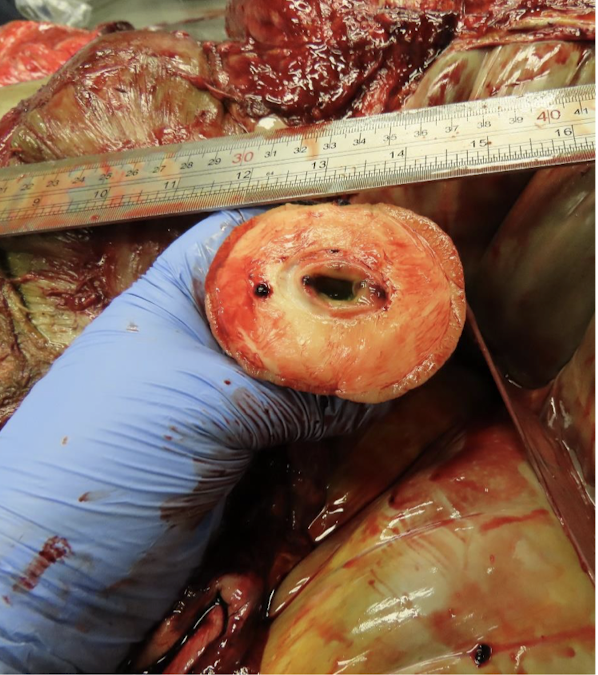
What is this an example of?
hypertrophy
Most often, what is smooth muscle hypertrophy in response to? What is the cause of the increased workload?
increased workload; unknown
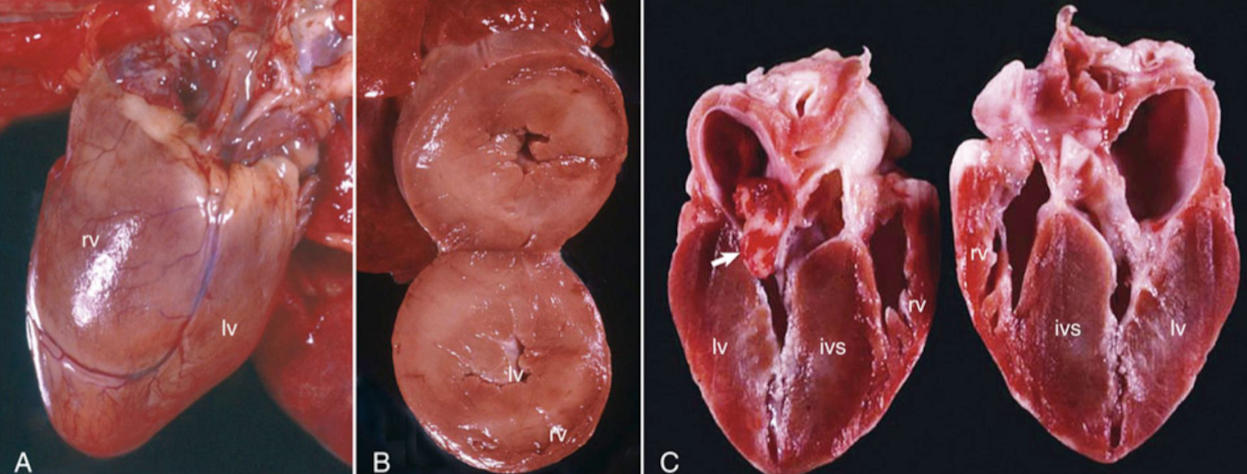
What is this an example of?
hypertrophy
an increase in cell number rather than cell size, which can increase the size of the organ itself
hyperplasia
Hyperplasia only occurs in what population of cells?
ones that are capable of mitosis
What cells readily undergo hyperplasia?
epithelial cells
What cells have an intermediate capability to undergo hyperplasia?
smooth muscle, bone, and cartilage
What cells do not tend to undergo hyperplasia?
striated muscle and nervous tissue
What cells can’t have hyperplasia? What are examples?
post-mitotic cells; cardiac and neuro tissues
What are the two main causes of hyperplasia?
physiologic or pathologic
What is a physiologic reason for hyperplasia?
hormonal/compensatory
What is a pathologic reason for hyperplasia?
excessive hormones or chronic irritation
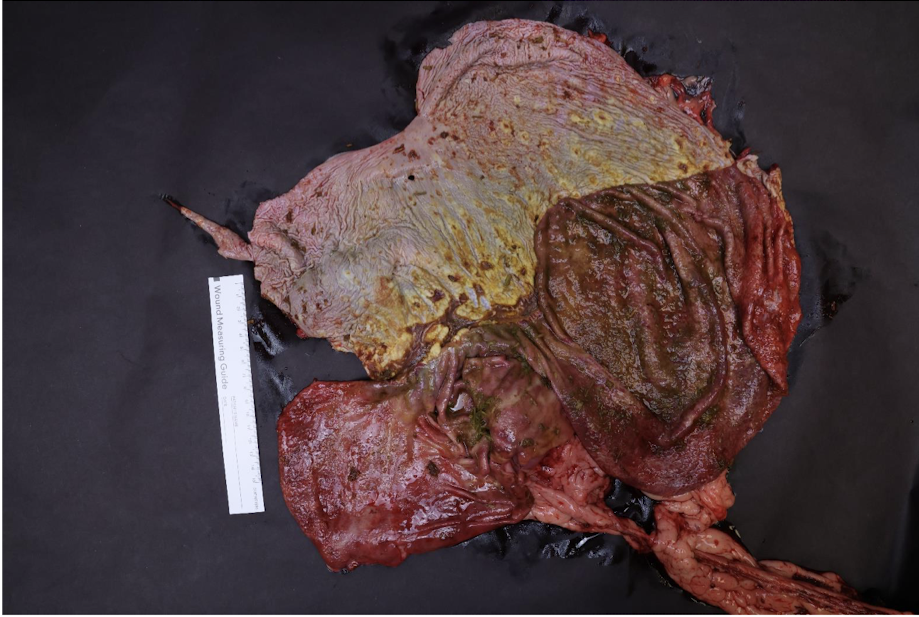
What is this an example of?
hyperplasia
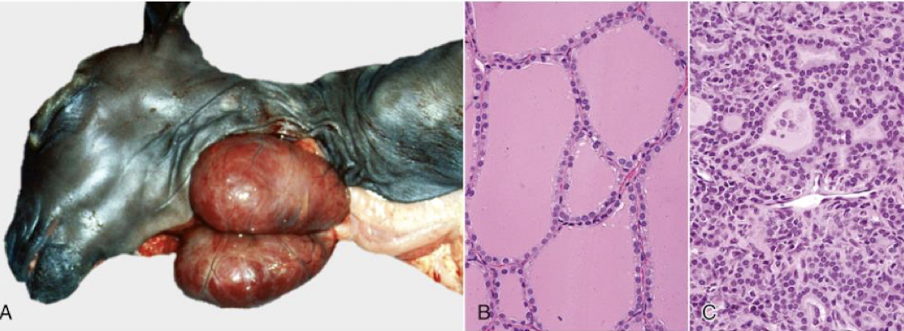
What is this an example of?
hyperplasia
decrease in mass of tissue/organ from decreased cell size after it has reached normal size
atrophy
What is the overall cause of atrophy?
decreased cell size due to a loss of mitochondria or other organelles or a loss of its principle cells
What are some specific causes of atrophy?
N
L
D
D
A
nutrient deprivation
loss of stimulation by trophic hormones or growth factors
decreased workload
denervation
autophagy or apoptotic cell death
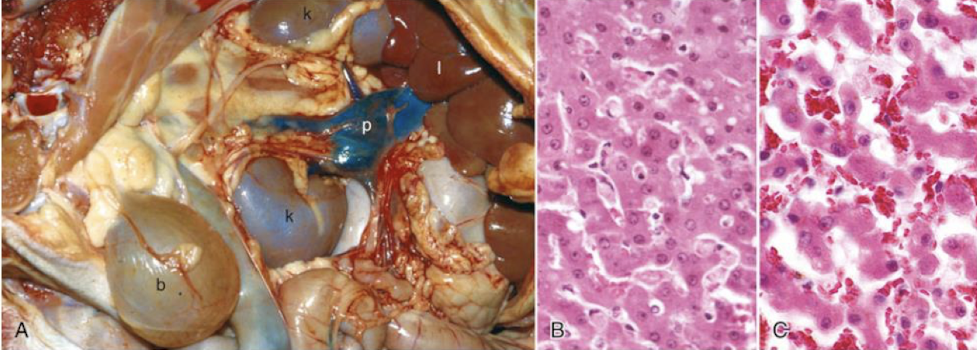
What is this an example of?
atrophy
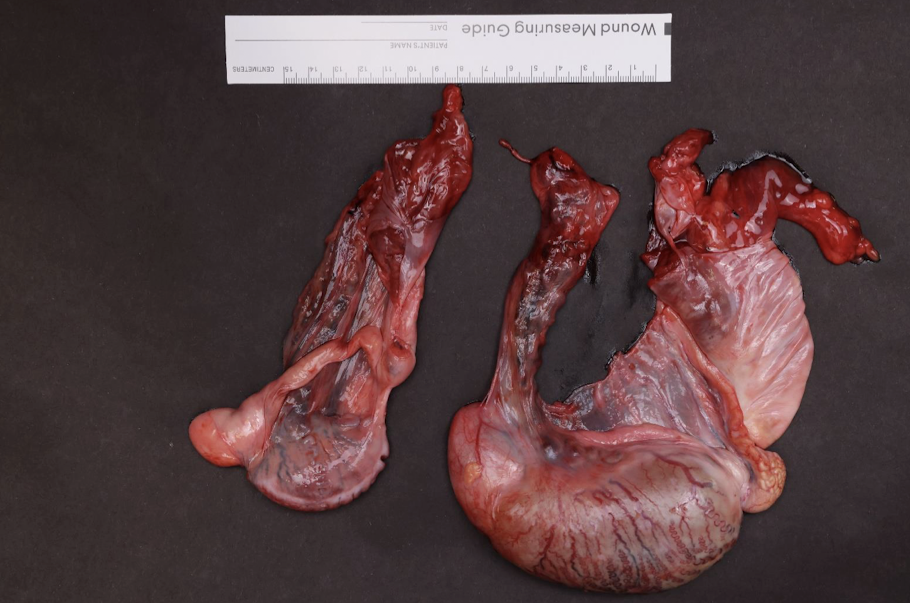
What is this an example of?
atrophy
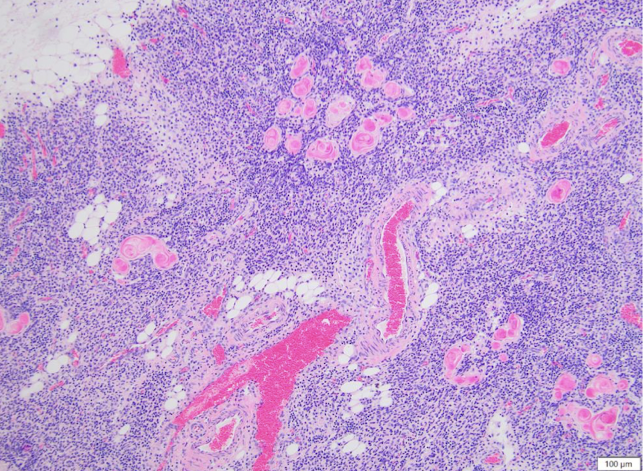
What is this an example of?
atrophy (thymic)
specific type of atrophy which results from prolonged negative energy states
serous atrophy of fat or gelatinous transformation of fat
From which type of negative energy states is serous atrophy of fat/gelatinous transformation of fat resultant of?
C
C
chronic emaciation
cachexia
In serous atrophy of fat, or gelatinous transformation of fat, the adipocytes loose their normal ________ structure, and are replaced by a ________ rich matrix.
lipid; glycosaminoglycan
Where are the most common locations to appreciate the changes associated with serous atrophy of fat, or gelatinous transformation of fat?
epicardial adipose at the location of the coronary arteries and within the diaphysis of long bones
Grossly, how does serous atrophy of fat, or gelatinous transformation of fat present? How should normal fat present?
adipose is replaced with a gelatinous clear to red tinged material; should be yellow

What is this an example of?
serous atrophy of fat or gelatinous transformation of fat
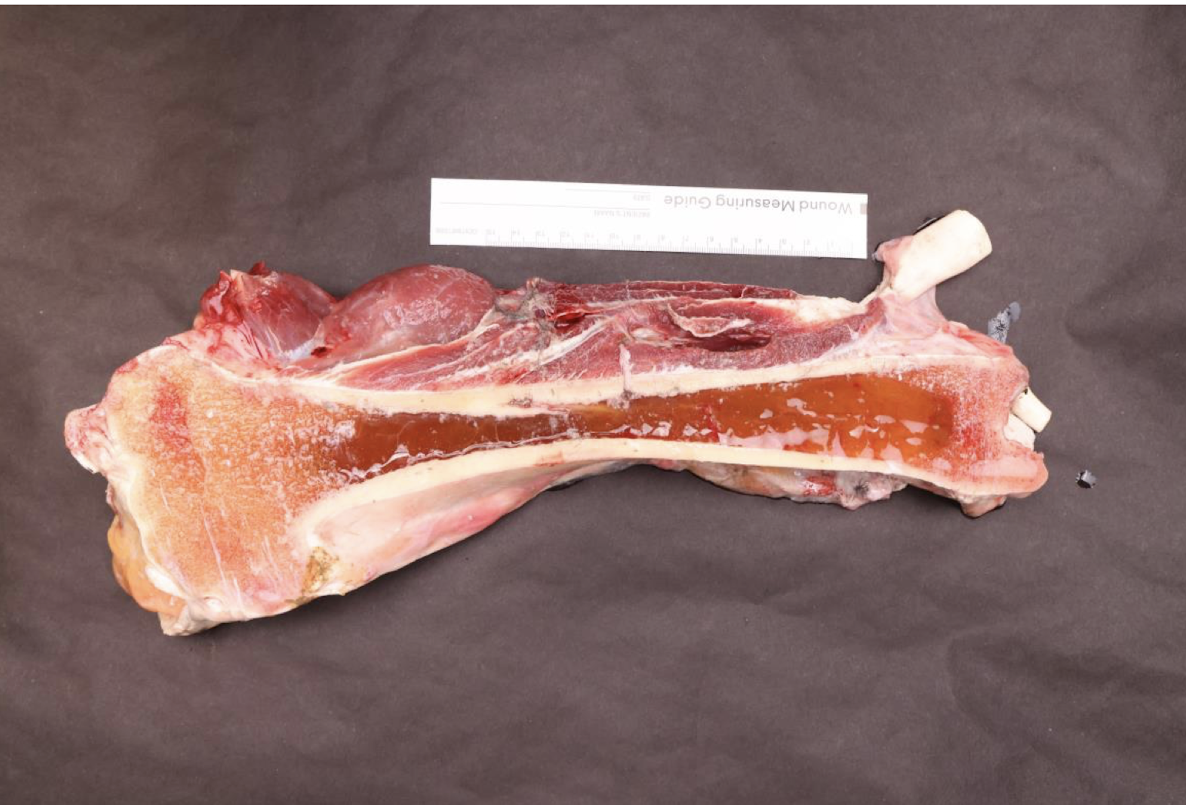
What is this an example of?
serous atrophy of fat or gelatinous transformation of fat
failure of an organ or tissue to fully develop
hypoplasia
True or false: Distinguishing between atrophy and hypoplasia can be difficult grossly, and sometimes requires histologic discernment.
true
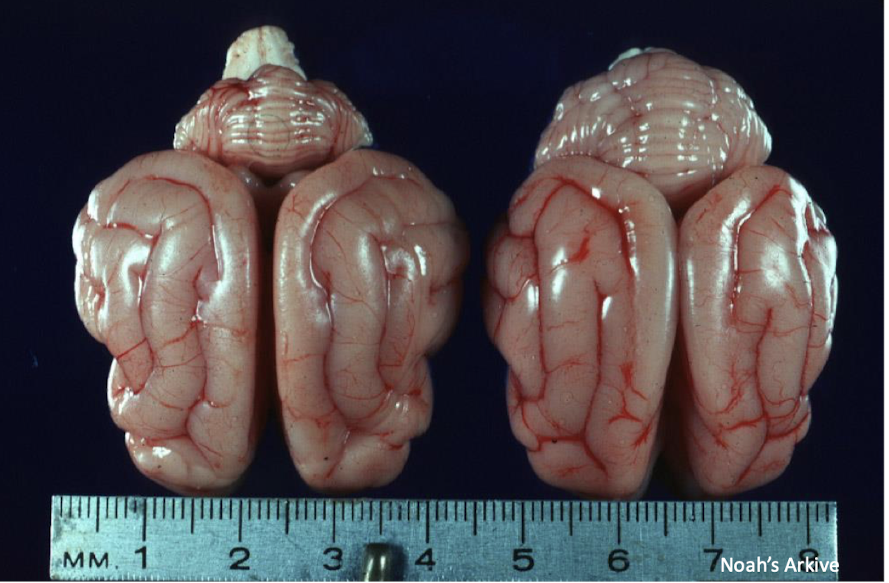
What is this an example of?
hypoplasia
replacement of one cell type with another
metaplasia
Why do cells undergo metaplasia?
it is an adaptation response to chronic reversible injury
What can happen with metaplasia if the cause is removed?
it can be reversible
What can metaplasia progress to?
neoplasia
What are causes of metaplasia?
C
H
V
T
chronic inflammation
hormonal imbalances
vitamin A deficiency
trauma
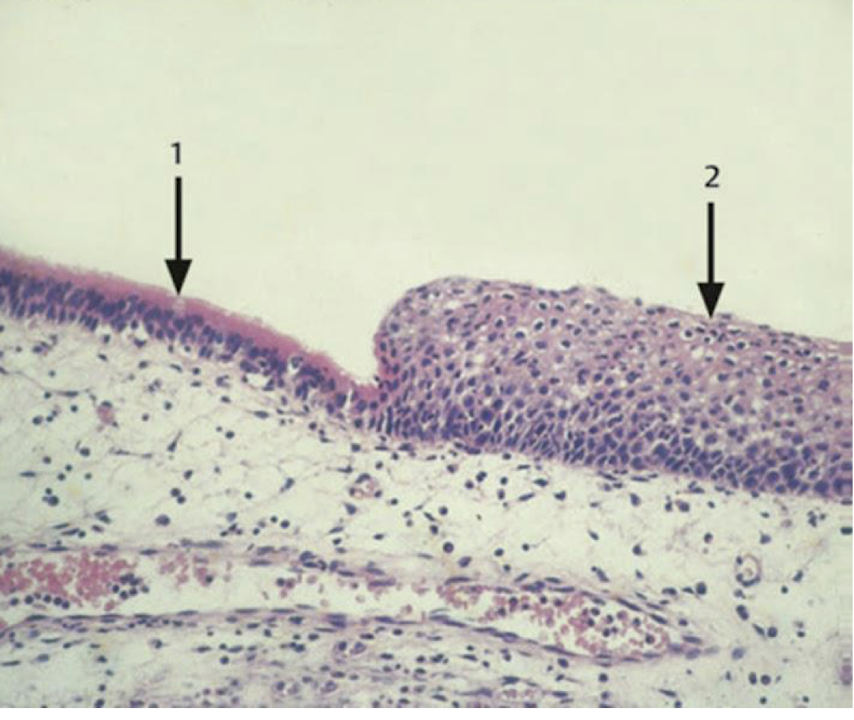
What is this an example of?
metaplasia
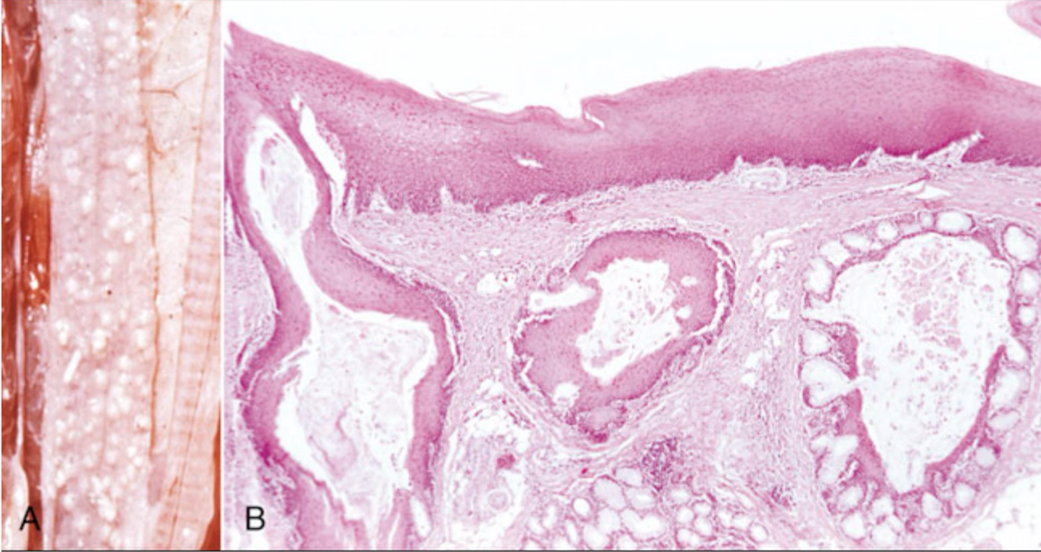
What is this an example of?
metaplasia
abnormality in the formation of a tissue or the increase in the number of poorly differentiated or immature cells
dysplasia
What can dysplasia be a precursor to?
neoplasia
True or false: Dysplasia is almost never diagnosed grossly, and will typically be diagnosed histopathically.
true
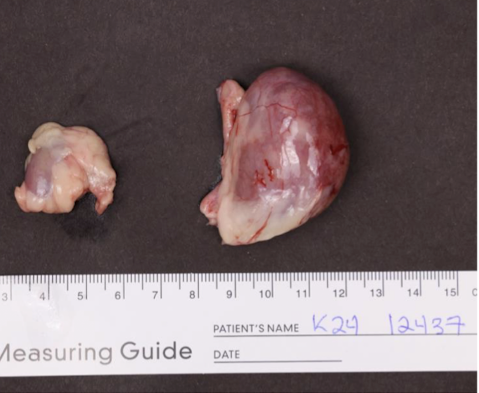
What is this an example of?
dysplasia
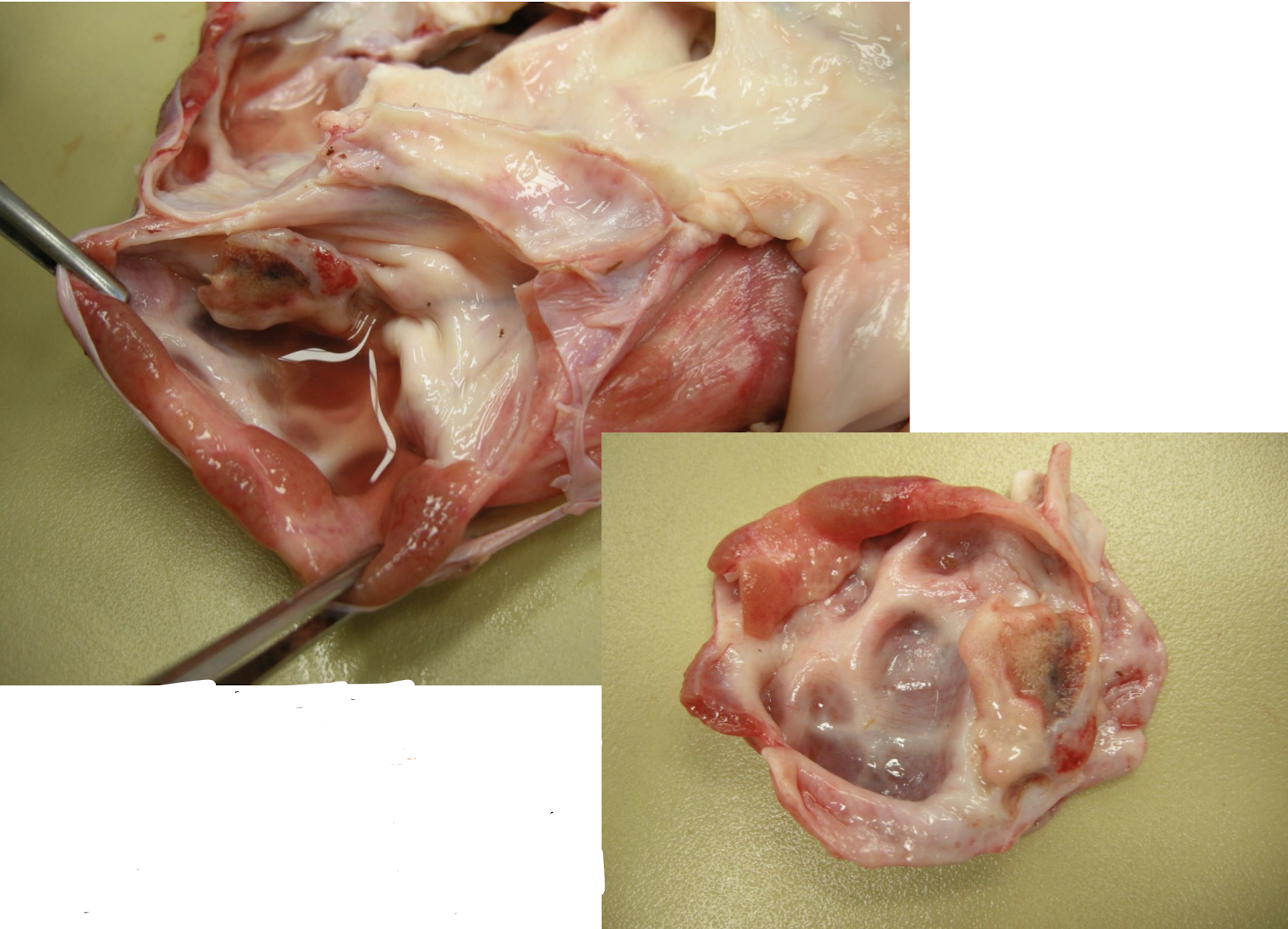
What is this an example of?
osseous metaplasia
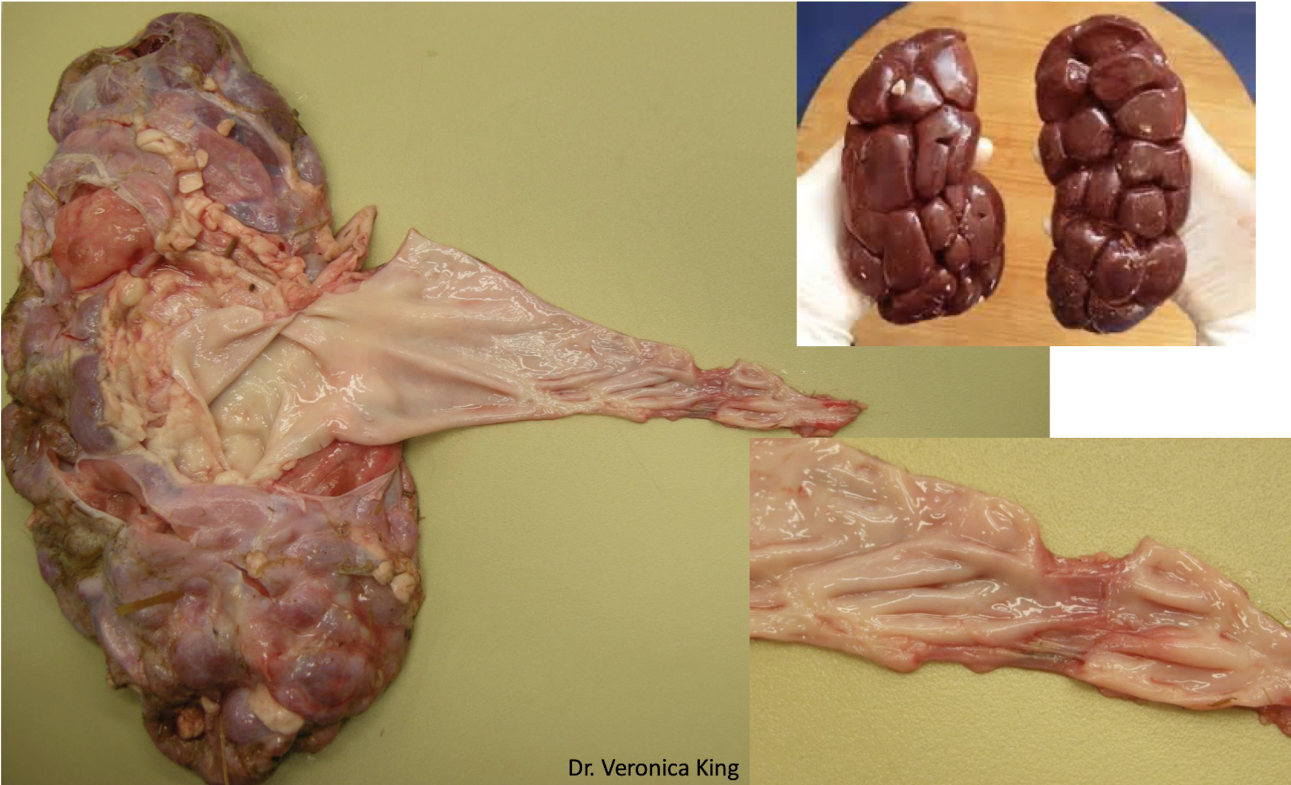
What is this an example of?
dysplasia
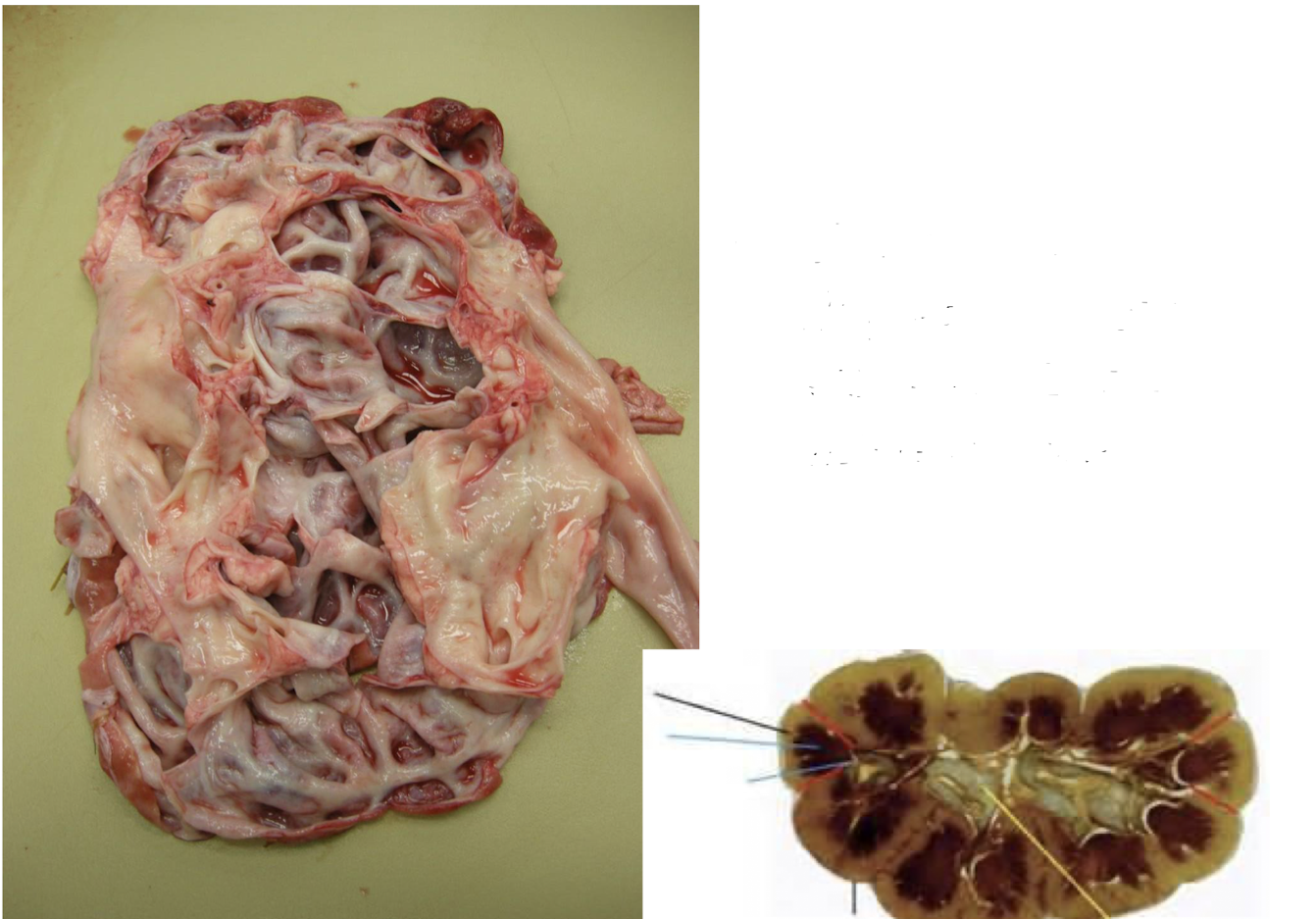
What cellular adaptation would you expect to see with this disease?
atrophy